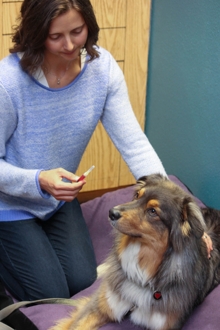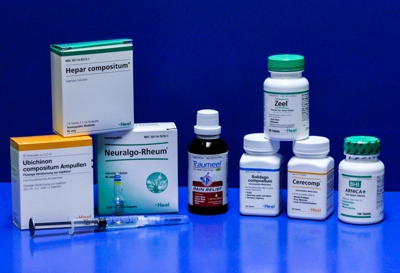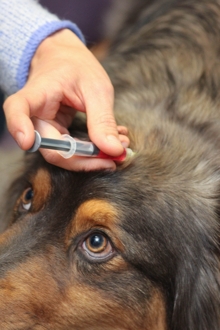Veterinary Homeopathy
A branch of alternative medicine established on a founding principle of “laws of similar” also called “like cures like” is known as homeopathy. Veterinary animal care is approached as whole body, mind, and spirit rather than simply focusing on a particular ailment. In other words it is a cause and effect approach. Underlying disharmony of whole being effects an ailment. Homeopathy treats an underlying cause rather than a resultant effect. Thereby, a body can restore harmony to heal itself naturally. In comparison, conventional medicine typically treats an effect which may alleviate symptoms but doesn't go far enough to assist with long-term prevention of recurrences. Homeopathy is a holistic discipline and other principles of good health such as diet, exercise and removal of stresses are also part of the process or restoring health. Our veterinarians have found it to be a gentle, safe and effective medical system which offers a true cure to many conditions.
Veterinarians are led to homeopathy treatment when they observe a chronic and recurring nature of so many of the problems we see in our animal patients. The goal of veterinarian homeopathic treatment is not to just treat a disease or condition but to cure it. This means that the symptoms of the disease are gone, the animal feels better, and has no new symptoms. Ideally, no further treatment is necessary.
Some examples of chronic diseases in animals that respond to homeopathy include skin allergies, ear infections, asthma, diabetes, inflammatory bowel disease, epilepsy, thyroid disease and many other conditions. Veterinarians have found that homeopathy can rapidly and gently treat a diverse array of acute conditions from traumatic injuries to poisonings and infections.
Veterinary Homeopathic Remedies
Alternative medicine preparations derived from our natural earth environment are referred to as homeopathic remedies. Natural substances are subjected to dilution processes known as potentisation or succussion until they lose their potentially toxic properties. The resulting diluted preparation continues to maintain its molecular structure which becomes the active ingredient of a remedy.



